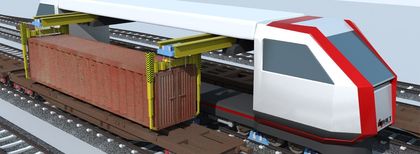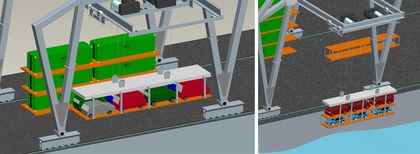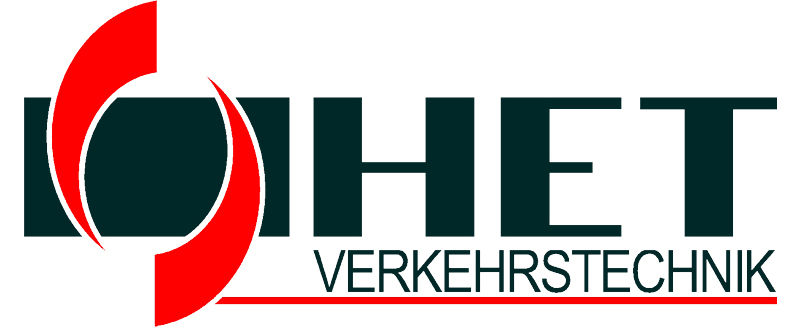Systems for Container-Converting
The transportation of goods by rail is the most economical way in terms of required energy per kg. A moving train with a total of about 1000 metric tons only requires about 7,k5 kW power - therefore it could be driven by a moped.
Disadvantages of railway traffic are a certain degree of inflexibility (eg. no converting at inner city areas possible) and the needed time (idle time during stop in container terminals). HET develops different solutions with the target of extremely reduction of idle times at the converting from train to train or train/truck.
Next to MCC (prototype) and the inclusion of new technologies in an existing terminal (RailCargo), HET works also on other concepts.
Benefits of all container-converting systems of HET:
- Minimal infrastructure necessary
- Time- and cost reduction at the transportation
- Eco-friendly
Stationary Container-Converter

With the stationary container converter (SCC) a transfer under overhead wiring is possible.
The transfer could be done at driving train (creep feed). As a result, buffer and tie rods are not relieved (significant energy and noise saving). A precisely concrete area could be used as container-buffer, where containers could be stapled up to three floors. A parallel use with forklift is possible without restriction.
Mobile Converting-Terminal (Train)

The mobile terminal consists of a driven wagon with integrated crane system. If you use this flexible terminal, no additional infrastructure is necessary.
The crane system as well as the control technology represents the main innovation part.
IM-Flat

The Danube River, despite it is a natural interlink to Eastern and Southern Europe, is only faintly used as transit way yet. It still has huge capacity reserves in terms of transportation. Therefore target of project „IM-Flat” (Inter-Modular-Flat) is the development of an innovative intermodal transportation technology and special container units (“modular units" for the fast converting of cars, petrochemical products, stones, cement), which increases the competitiveness and efficient usage of the inland vessel business.






